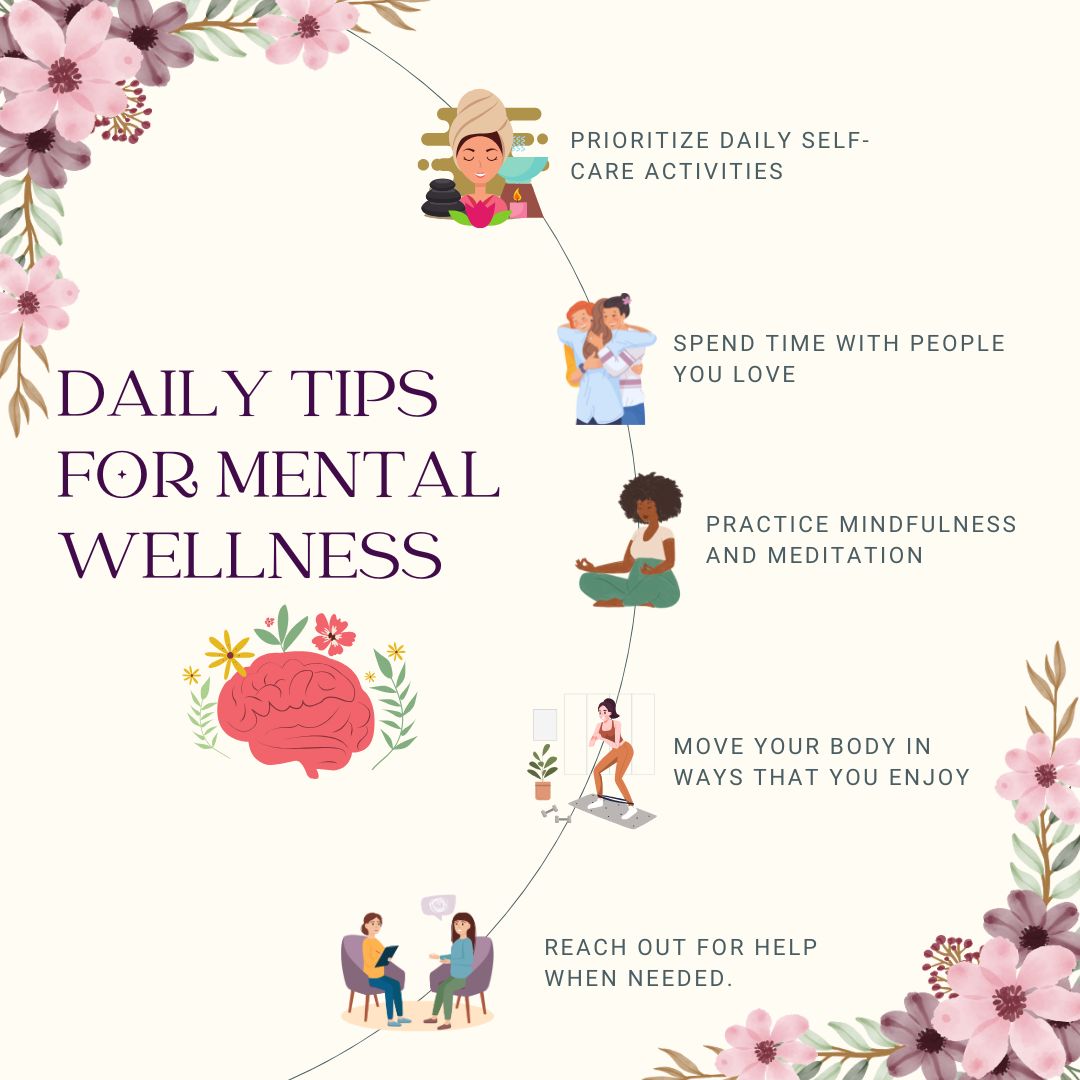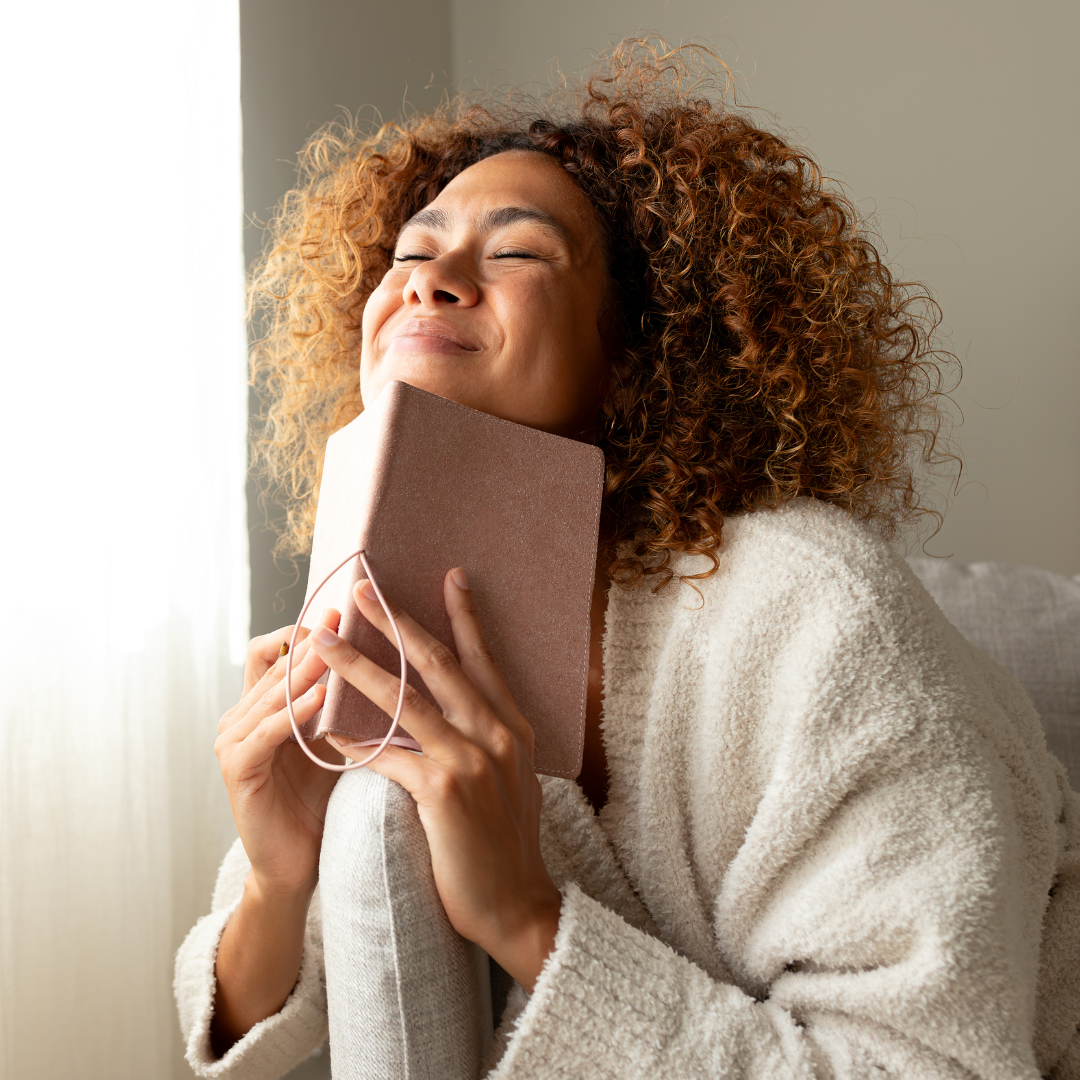

Anxiety can sometimes feel like a storm that’s tough to calm. Imagine you’re in a situation where your heart races, your hands get clammy, and all you want is for the moment to pass.
For many, that’s daily life. But what if I told you there’s a way to slow down the storm? Through meditation and breathing exercises, you can take charge of your anxiety and find peace within. Let’s dive into how breathing exercises can help you manage anxiety naturally, without relying on medication.
No one can. Even longtime meditators have thoughts. The key is not to get hooked. Watch them like a movie without reacting.
Let them come and go like clouds passing through the sky. You’re not your thoughts—you’re the one observing them.
Anxiety often shows up in physical, emotional, and mental ways. You might feel:

Anxiety often stems from our body’s “fight or flight” response. When faced with stress, your brain releases adrenaline, preparing you to react quickly. While helpful in dangerous situations, this response can get triggered by everyday stress, leading to chronic anxiety.
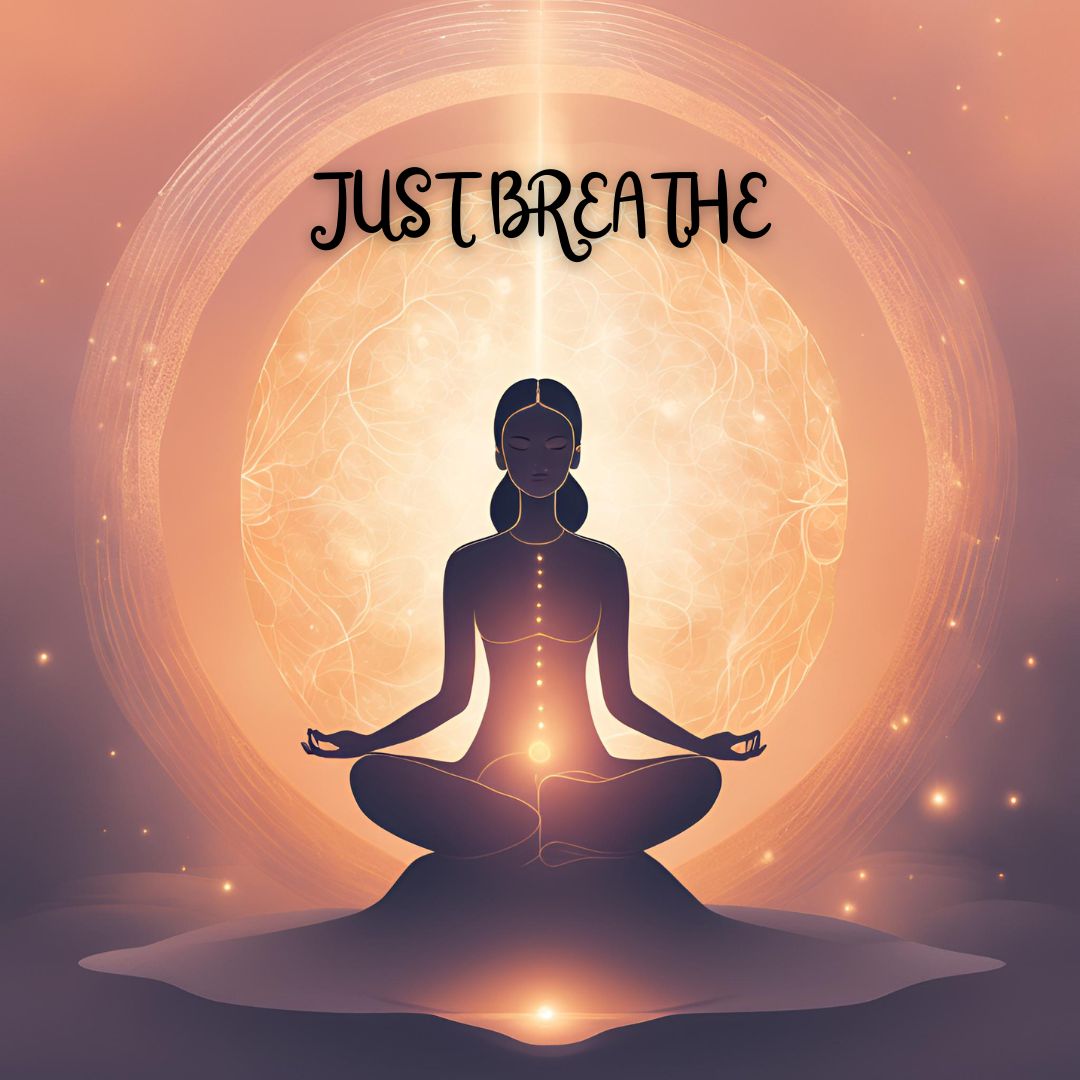
When you breathe deeply, your body shifts from a high-alert state to a calm state. Shallow breathing, often a result of anxiety, signals to your brain that you’re under stress. Deep breathing does the opposite, letting your brain know that everything is okay.
Our nervous system has two main parts: the sympathetic (fight or flight) and parasympathetic (rest and digest) systems. Deep breathing activates the parasympathetic system, slowing down your heart rate and lowering blood pressure, which helps reduce anxiety.
Deep breathing sends oxygen to your brain and helps clear your mind. When your mind isn’t fixated on stress, you’ll find it easier to relax.
Breathing exercises are a simple yet powerful way to calm the mind and body. They help reduce anxiety by slowing the heart rate, lowering stress hormones, and promoting relaxation. Regular practice can improve focus, emotional stability, and overall well-being.
Practices like deep breathing and meditation can help lower your heart rate, reduce blood pressure, and relieve muscle tension, promoting overall relaxation and well-being.
Mindfulness practices can lower stress levels, improve focus, and create a sense of calm, helping you feel more balanced and emotionally grounded.

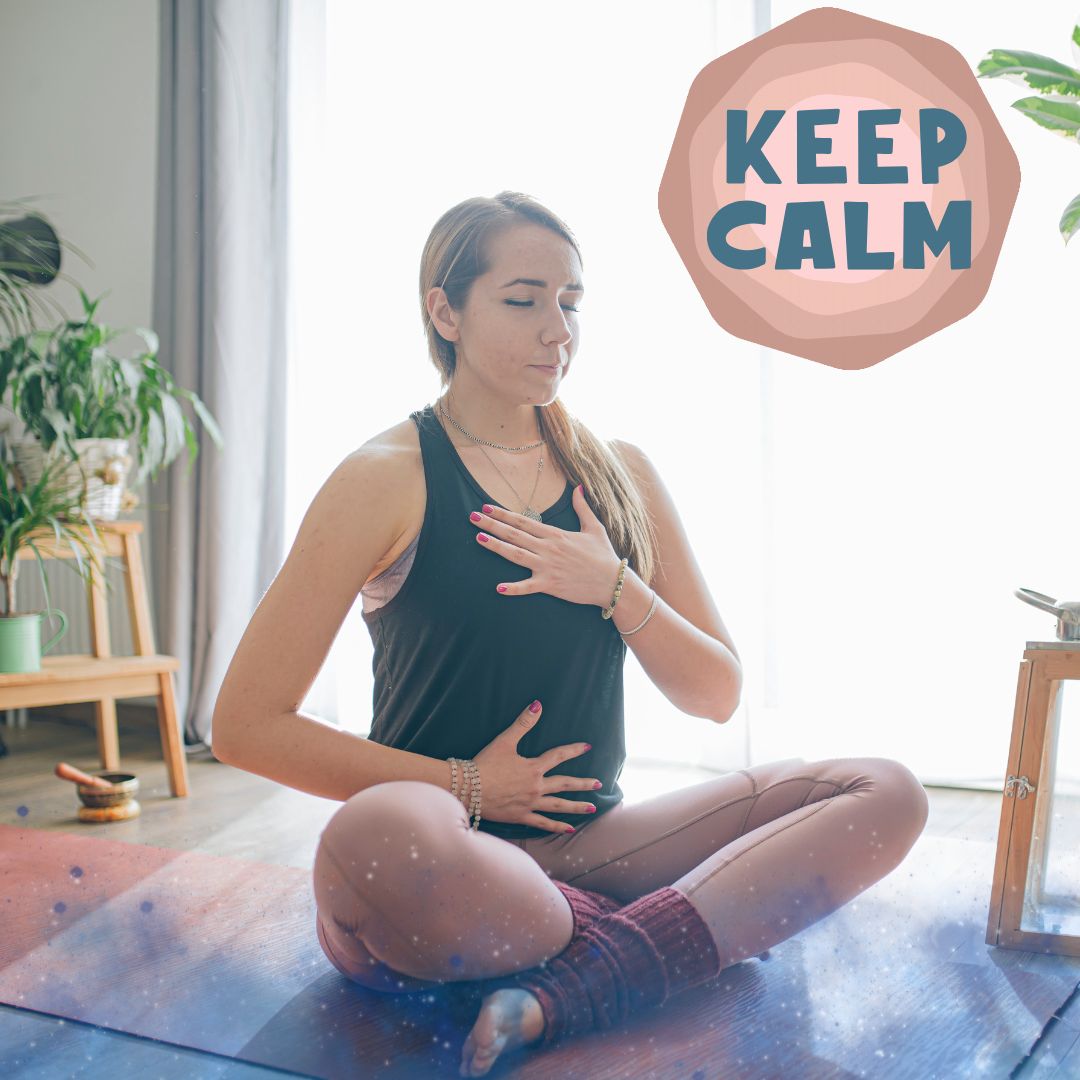
Belly breathing focuses on filling your diaphragm rather than your chest.
Box breathing is a simple yet powerful breathing technique used by Navy SEALs and others to stay calm and focused in high-stress situations. It helps regulate the nervous system, reduce anxiety, and improve mental clarity.
This technique can be done anywhere—at home, at work, or even before bed—to bring your mind and body back into balance.
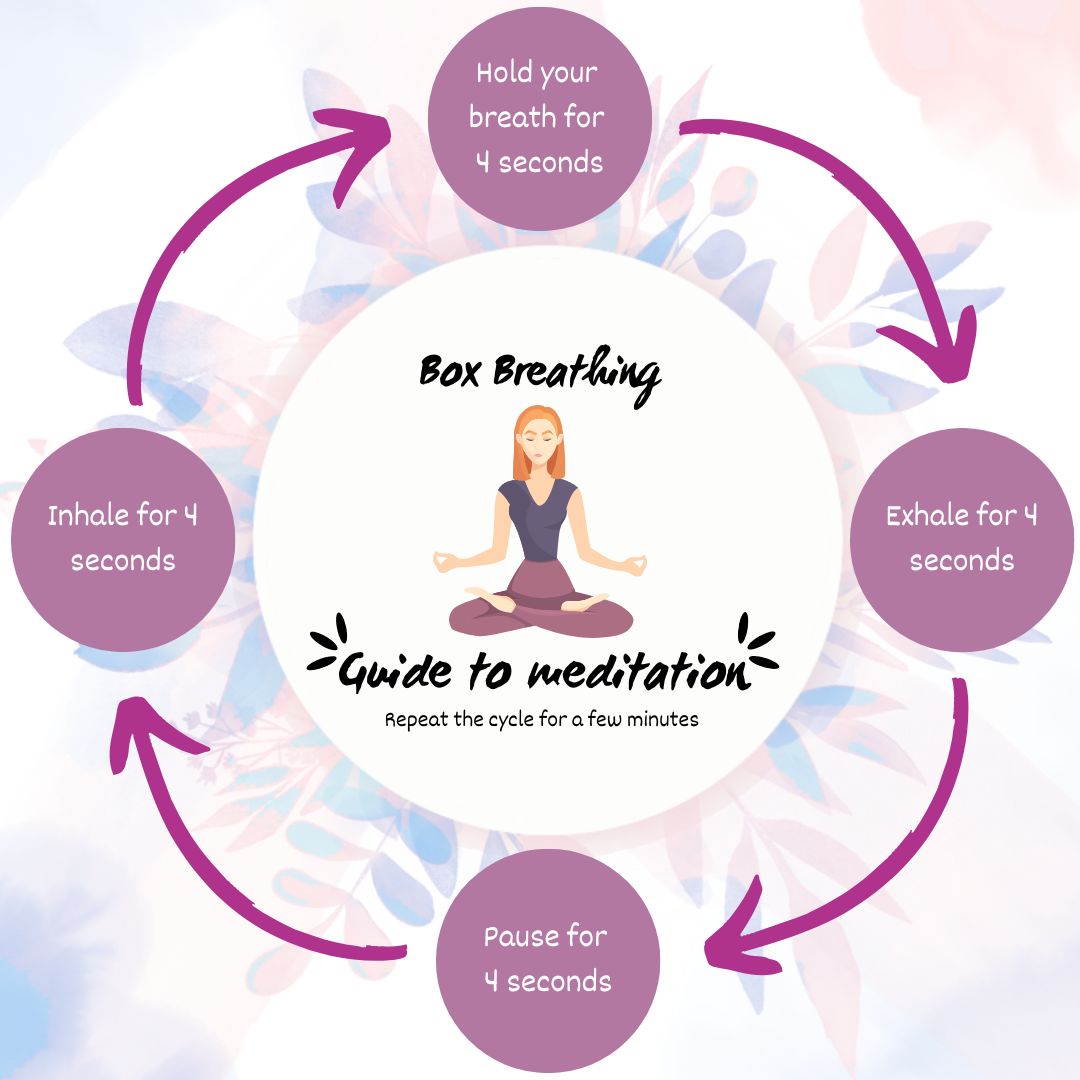

The 4-7-8 breathing technique is a calming method popularized by Dr. Andrew Weil. It’s known for its ability to quickly reduce anxiety, calm the nervous system, and promote relaxation—making it especially helpful before sleep or during stressful moments.
This technique combines breathing with muscle relaxation, easing both physical and mental tension.
Meditation helps you develop mindfulness—the ability to stay present and aware in the moment. When combined with breathing exercises, this awareness allows you to consciously slow your breath, calm your mind, and respond to stress with greater ease.
Over time, meditation strengthens your connection to your breath, making it a powerful tool for emotional balance and anxiety relief.
If you’re new to meditation or find it hard to relax on your own, guided meditations can offer gentle support. Listening to a calming voice while practicing breathing techniques can enhance the soothing effect and help quiet racing thoughts.
To help you relax and restore your inner peace, we invite you to listen to our Guided Meditation for Anxiety Relief on our YouTube channel. Watch here
Breathing exercises are most effective when practiced regularly. By creating a consistent routine and a calming environment, you’ll find it easier to make this a peaceful habit in your daily life.
Choose a set time each day—like first thing in the morning or right before bed—to make it part of your routine.
Start small with just 2–5 minutes, and gradually increase as it becomes more natural.
Use reminders or set a gentle alarm to help you stay on track.

Find a quiet, comfortable space where you won’t be disturbed.
Enhance the atmosphere with soft lighting, candles, essential oils, or calming music.
Consider adding a cozy cushion or blanket to make your space more inviting.
By making your practice enjoyable and consistent, breathing exercises can become a powerful tool for daily stress relief and inner calm.
Managing anxiety can be challenging, but breathing exercises provide a powerful and accessible way to find relief.
With regular practice, you can calm your mind, relax your body, and regain a sense of control. Start small, stay consistent, and allow these simple techniques to become a soothing part of your daily routine.
Over time, you’ll notice a real shift in how you respond to stress.
